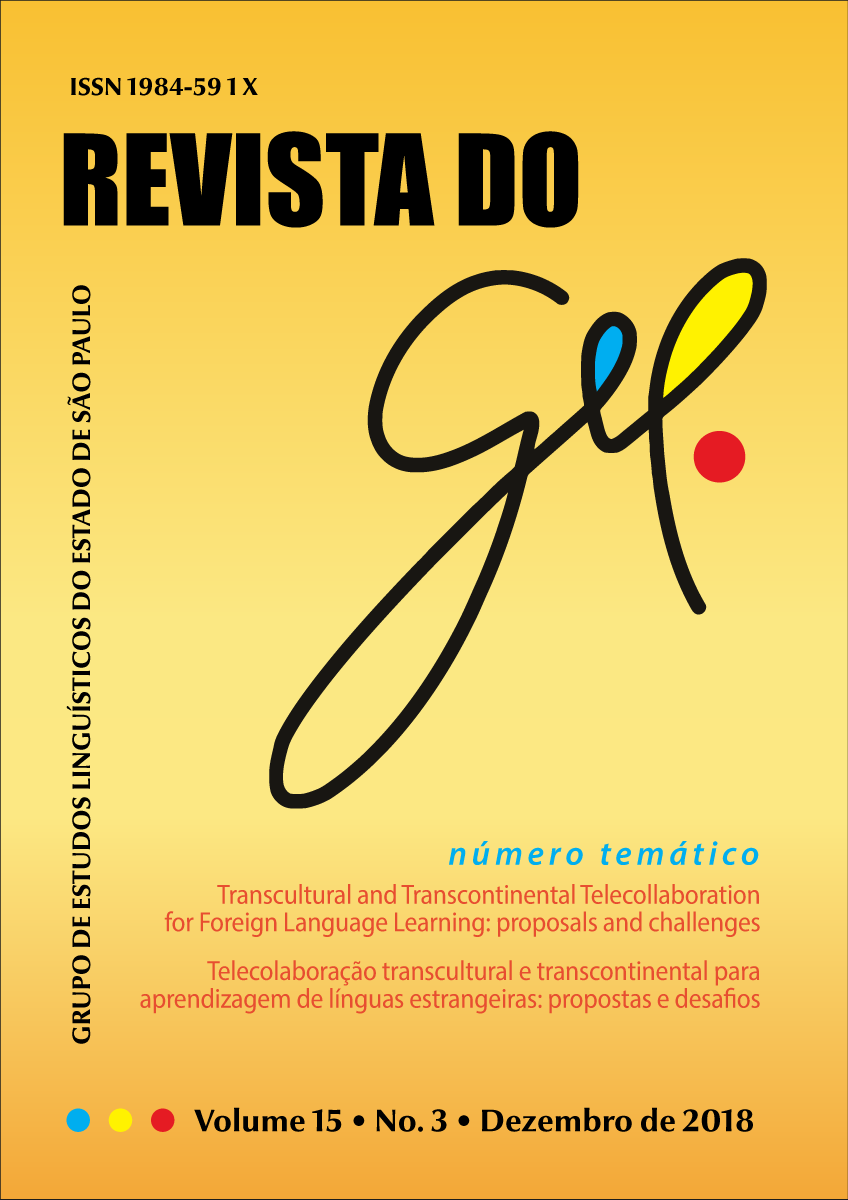New directions in eTandem: an expanded vision of capabilities and practices
DOI:
https://doi.org/10.21165/gel.v15i3.2395Palavras-chave:
eTandem. Reciprocity. Private Sector Partners. L2 Instructional TechnologyResumo
Autonomy and reciprocity, two central tenets of eTandem, are not ideologically neutral terms. In light of new technological opportunities and pedagogical directions in higher education, current formulations of these concepts are perhaps too narrow to accommodate the full range of collaborative activities available to instructors and students. For better or worse, education assumes a significant and definitive role in the market economy. The public-private distinction is not an actual binary: it is more accurately understood as a spectrum, and educational institutions function dually as hybrid recipients and benefactors of economic activity. eTandem is an excellent foundation, but teachers should not feel limited in its scope and purview. By reflecting on instructional activity and observation in Arabic, Italian, and Spanish courses at the University of Richmond, this article presents different interpretations of eTandem. The traditional model can be enhanced with related tools and methodologies to engage students more deeply, and challenge them to push the boundaries of their language, abilities, and knowledge. While additional SLA research would be needed to confirm the transference of learning outcomes of both models through comparative evaluative metrics, this article outlines ideas for instructors to commence new directions in eTandem, and consider improvements to long-standing practices.Downloads
Não há dados estatísticos.
Downloads
Publicado
31-12-2018
Como Citar
Marsh-Soloway, M. A., & Delers, O. M. (2018). New directions in eTandem: an expanded vision of capabilities and practices. Revista Do GEL, 15(3), 176–193. https://doi.org/10.21165/gel.v15i3.2395
Edição
Seção
Edição Temática v. 15 n. 3 (2018)
Licença
Esta revista oferece acesso livre imediato ao seu conteúdo, seguindo o princípio de que disponibilizar gratuitamente o conhecimento científico ao público proporciona maior democratização mundial do conhecimento.
A REVISTA DO GEL não cobra taxa de submissão ou de editoração de artigos (articles processing charges – APC).
Os critérios gerais de direitos autorais da REVISTA DO GEL estão dispostos no termo de direitos autorais que cada autor aceita ao submeter seu trabalho no periódico. Como regra geral o periódico utiliza as regras CC BY-NC da Creative Commons (regra disponível em: https://creativecommons.org/licenses/by-nc/4.0/legalcode)



